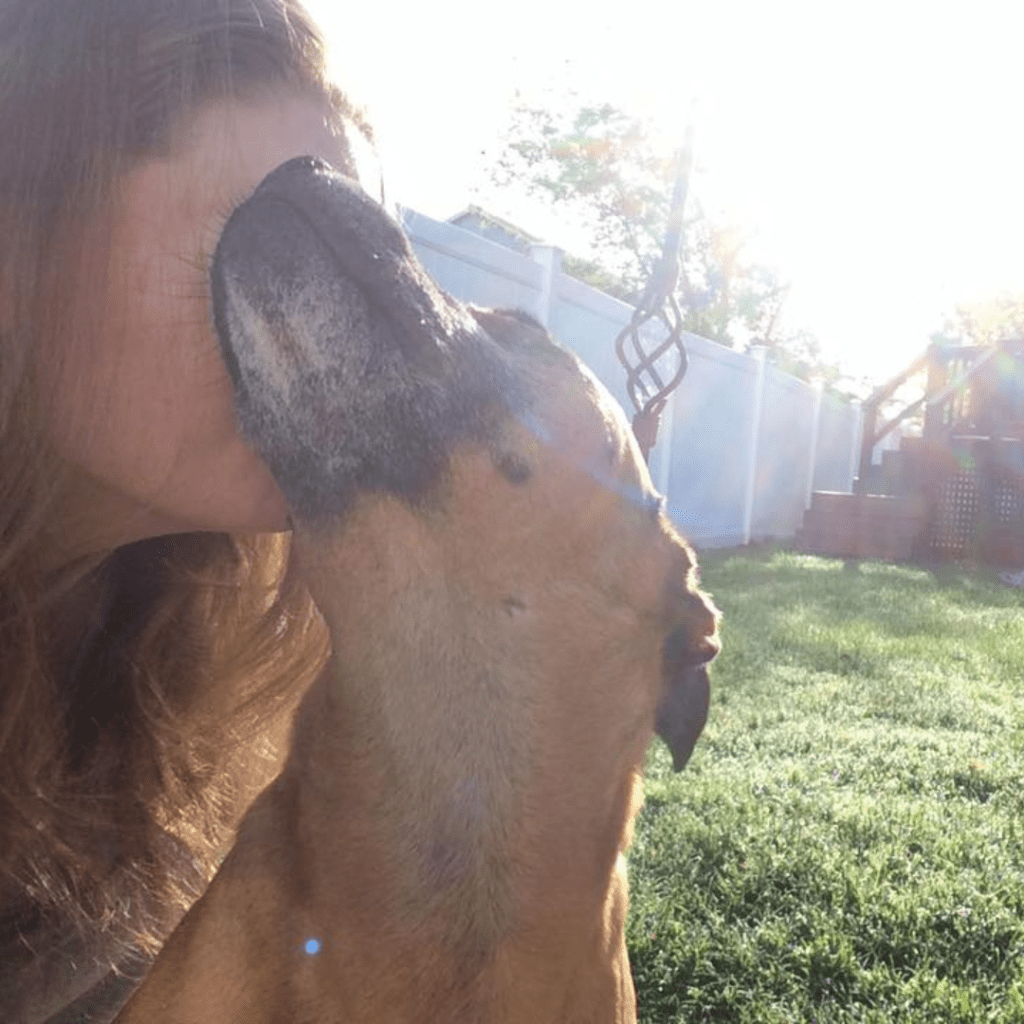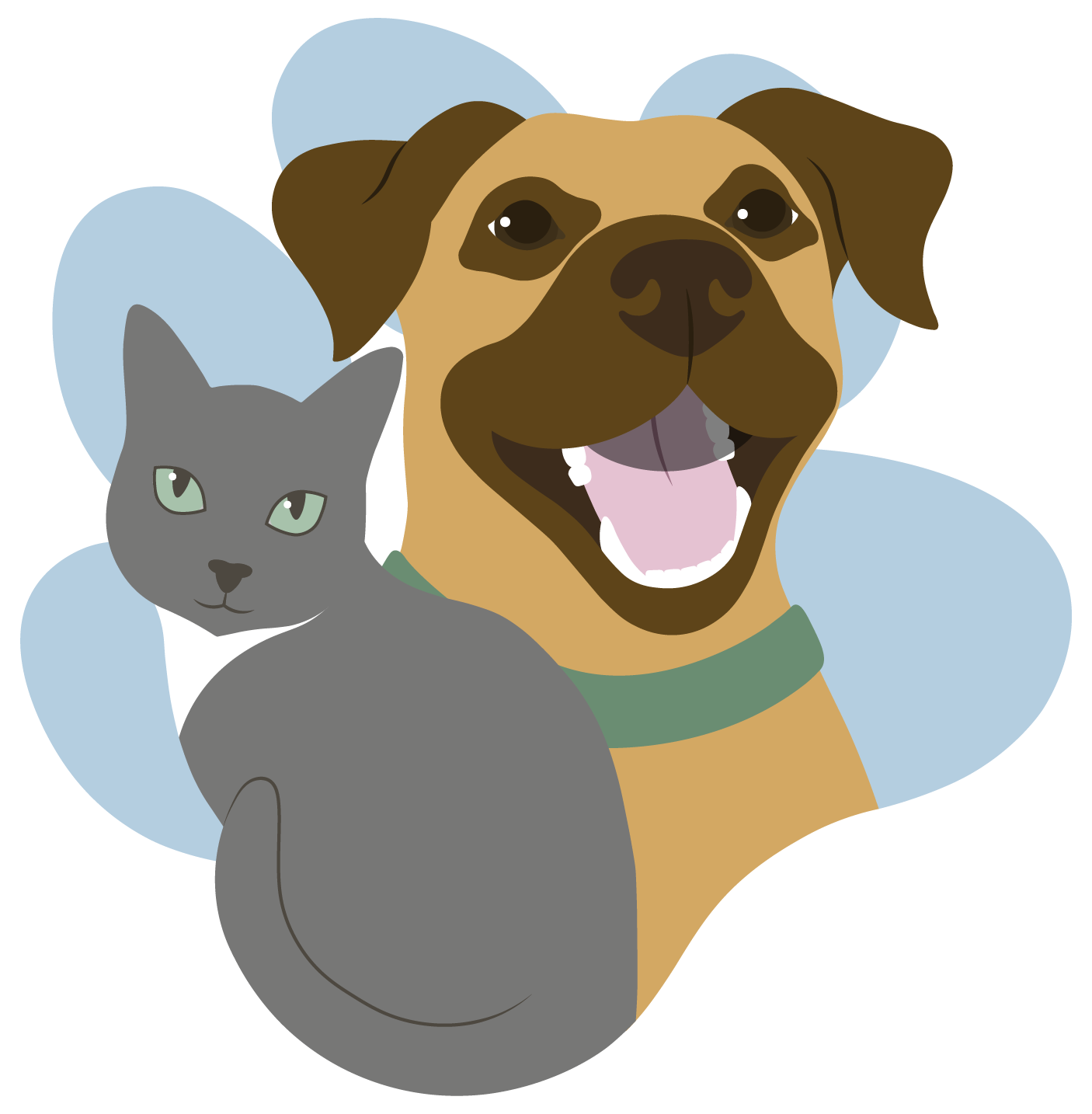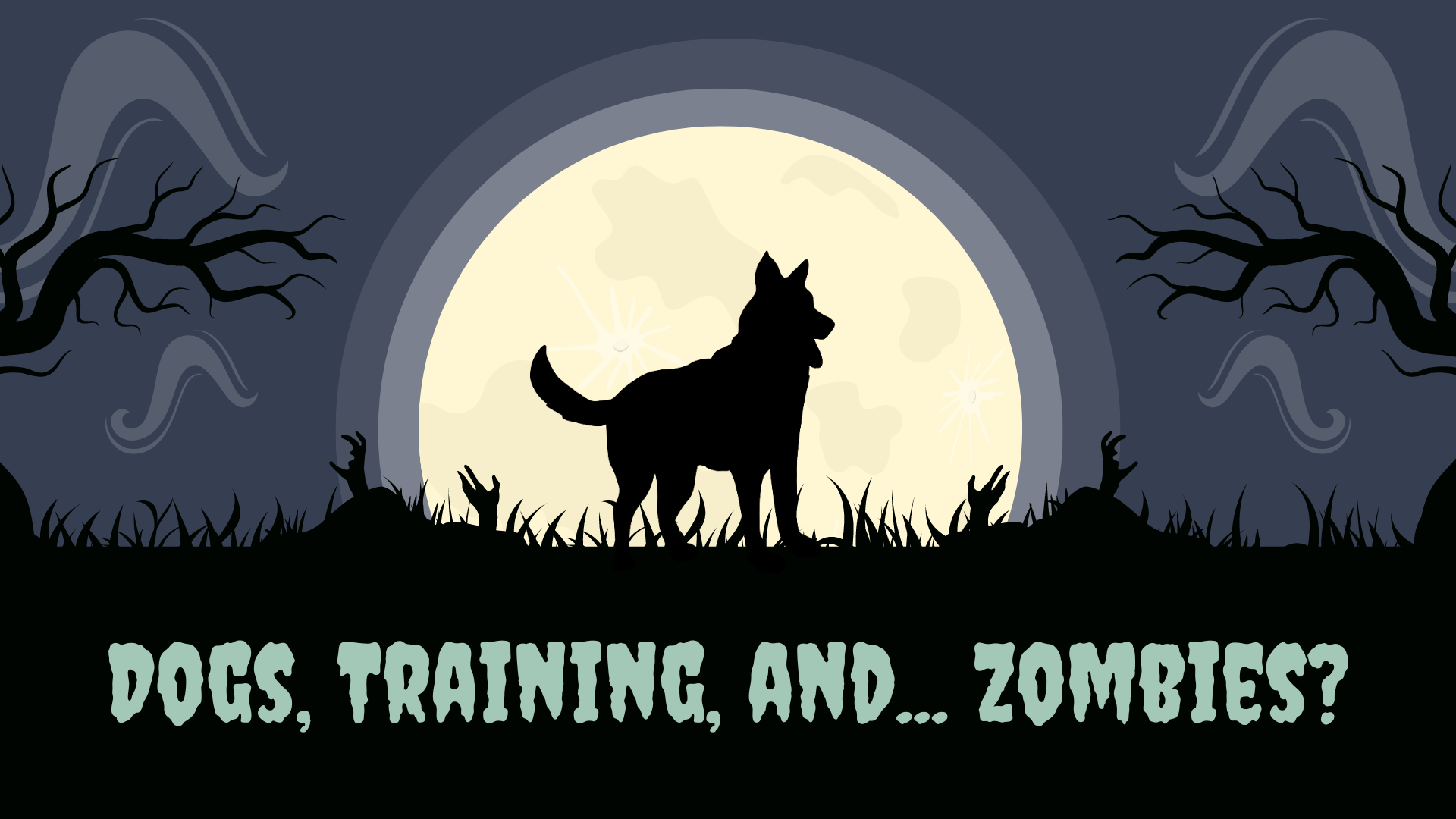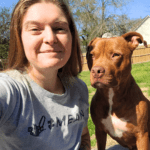Dogs, Training, and… Zombies?
What do zombies have to do with dog training?
I had a light bulb moment one day when I got up the nerve to watch Zombieland 2. I have never, ever, enjoyed zombie movies or anything to do with zombies. So why was I willingly choosing to watch one that day? Desensitization. Gradual, choice-based, learner-driven, desensitization.
To understand my aversion to this fictional frightful figure it may help to know how and when it all started. After all, I wasn’t born afraid of zombies.
When I was in high school some friends invited me over to watch a movie – 28 Days. A zombie movie. I had never seen one before and had not been introduced to this genre to prepare me either. I think what did it for me was that during the opening scenes, the camera pans out over the neighborhood to view the chaos and horror below. At that moment, one of our group members stated, “Hey Sydney, that looks like your neighborhood!”. I was done. One trial learning. One moment of connecting cinema fear to real life and my brain and body prepared for danger. It didn’t help that no one supported me or helped me feel better; just continued harassment. It was intended to be a joke, and everyone perceived it that way but me. I was in a safe environment, but suddenly I didn’t feel secure.
The moment passed almost as quickly as it came, but the negative association was made. Zombies = unsafe, scary, and not worth watching movies or other zombie entertainment-directed material. So I did what any individual does when a negative association is made. I avoided it.
You see, every individual of any species learns through the same basic concepts: reinforcement, punishment, classical and operant conditioning, one-trial learning, and more. Strong emotions play a huge role in learning, and my aversion to zombie-related material started just like any aversion does. Fear. “But zombies aren’t real” you may say. I know this, but my adaptive brain doesn’t think rationally. Neither does yours or your dog’s when faced with a scenario that feels unsafe or scary.
One-trial learning is sometimes all it takes to make a strong association.
One single, emotionally overwhelming event that greatly influences future behavior under similar conditions. Add repeated exposure at the intensity that elicits the same stress response, i.e. flooding, and you can make matters so much worse. Science consistently shows this, and anecdotally many of my clients and I have also witnessed this firsthand.

My first rescue dog, Wesley, was not comfortable around other dogs. Knowing what I know now, I can pinpoint the single event he learned not to trust another dog he didn’t know already. To make matters worse, I flooded him. I tried on my own to introduce him to dogs, oblivious to how fear was influencing his learning. He avoided, or when forced on the leash to approach, he would lash out and become reactive. I reached out for help from a dog trainer, but I didn’t do my due diligence to ensure I found someone who could truly help Wesley and me. I was instructed that to help him I had to force more and more exposure to other dogs and “let him get over it”. We received a lot of bad advice like this. Continually and under this person’s instruction, I exposed Wesley to other dogs and punished him if he “wasn’t calm”. I made the problem so much worse by forcing him to face his fears without appropriately providing him skills, safety, and security all in the name of “dog training”. I was a young adult and barely involved in the pet industry, but I didn’t fully recognize the damage I was causing.
He began to generalize his fears to all dogs, even people because he didn’t perceive people as safe or predictable. I grieve for what he must have been feeling. Anything remotely similar to or associated with dogs became a trigger. For me, zombies began to generalize to other triggers. I used to watch horror movies all the time as a teenager. However, after that one zombie movie, all horror movies began to feel too scary. Of course, I know that the threat to me is not real. I can cognitively recognize the difference between a real threat and a fake one on TV. But our dogs can’t always recognize the difference between a true threat and a perceived one. A perceived threat IS a real threat for them.
Now comes the reason why I, like our pets, have the opportunity and ability to try and recover from these events. In recent years there have been a few zombie movies that I was interested in; the trailer had a storyline I wanted to watch or there was a lot of comedy. So I tried to watch one. I still don’t remember which one or how long I watched it, but it was my choice. I had control of it – when it started and stopped, the volume, and how closely I paid attention without someone coercing me to continue. It wasn’t horrible. I didn’t love it, but I could manage. From there, I continued to watch them on rare occasions, in small clips, usually when I was half occupied with other tasks to help break up the engagement, but it was always my choice.
I was gradually desensitizing myself without even thinking about it. I enjoyed some of the storylines, comedy, and recognizing actors or actresses I like, and you get some counterconditioning to go along with it. So on this day, when I remembered I had seen that Zombieland 2 was available on Hulu and that I decently enjoyed the comedy of its predecessor, I decided to watch it. I still actively engage in other activities, but I find myself now rewinding to parts to rewatch so I can pay closer attention. Again – my choice. And guess what, I was entertained. Not fearful, not anxious, and not distressed.
Wesley was able to recover in many ways as well once I began working with a humane and qualified professional. It was a long process of working through desensitization and counterconditioning to overcome the damage done. Fear is an immense emotion all species are hardwired to remember fearful events to avoid them in the future. We never quite reached being able to meet other dogs, but he was better prepared for how to handle their presence. He also learned that new people can be his friends.
When we are working with our dogs, or any pet for that matter, we must move away from the traditional methods of forcing and coercing obedience, especially around triggers. We’re not doing our pets any favors by following these outdated methods and using punishment-based tools. Every dog is its own individual, with feelings, thoughts, wants, and needs. We can’t force them to be something or someone they aren’t, no matter what our desires are. What we can do is progress to more humane and updated teaching methods that are learner-driven and focus on providing choices, safety, security, autonomy, and consent.
If the dog has a response to something that we find undesirable, we owe it to them to observe objectively and learn more about why they responded the way they did. If my dog finds something aversive and I don’t recognize it, or worse, force the issue in attempts to “teach them that was bad or wrong” or to “get over it”, I risk creating a worse matter for my dog, for myself, and sometimes for the community’s safety.
Instead of focusing on your dog “misbehaving”, remember that they have their own “zombies” to deal with and perhaps not the skills or support they need to overcome. I want to be that needed support for my dog. The safe and predictable human that sees that my dog has their own feelings and then arranges the environment and our interactions to provide the opportunity to make choices and feel secure. The more the dog can practice these little moments of gradual desensitization, freedom to make choices, and to engage or disengage at their pace, the more likely they are to begin finding the motivation and confidence to continue expanding their comfort zone.
Working through desensitization is just one way we can give our dogs the ability to learn they have control over their bodies. You already have control in so many ways: their home, their family, their food, their veterinarian, and so much more. But you cannot control their fear or other emotions. With guidance, they can learn how to work through their fears. Desensitizing one trigger at a time. One zombie movie at a time.
Sydney is a certified canine behavior consultant and dog trainer with a bachelor’s of science in psychology. She is the owner and lead behavior care consultant of Clever Critters, LLC in Hampton Roads, Virginia. She and her team offer in-person and virtual services dedicated to the physical and behavioral wellness and humane training of pets and their caregivers.





